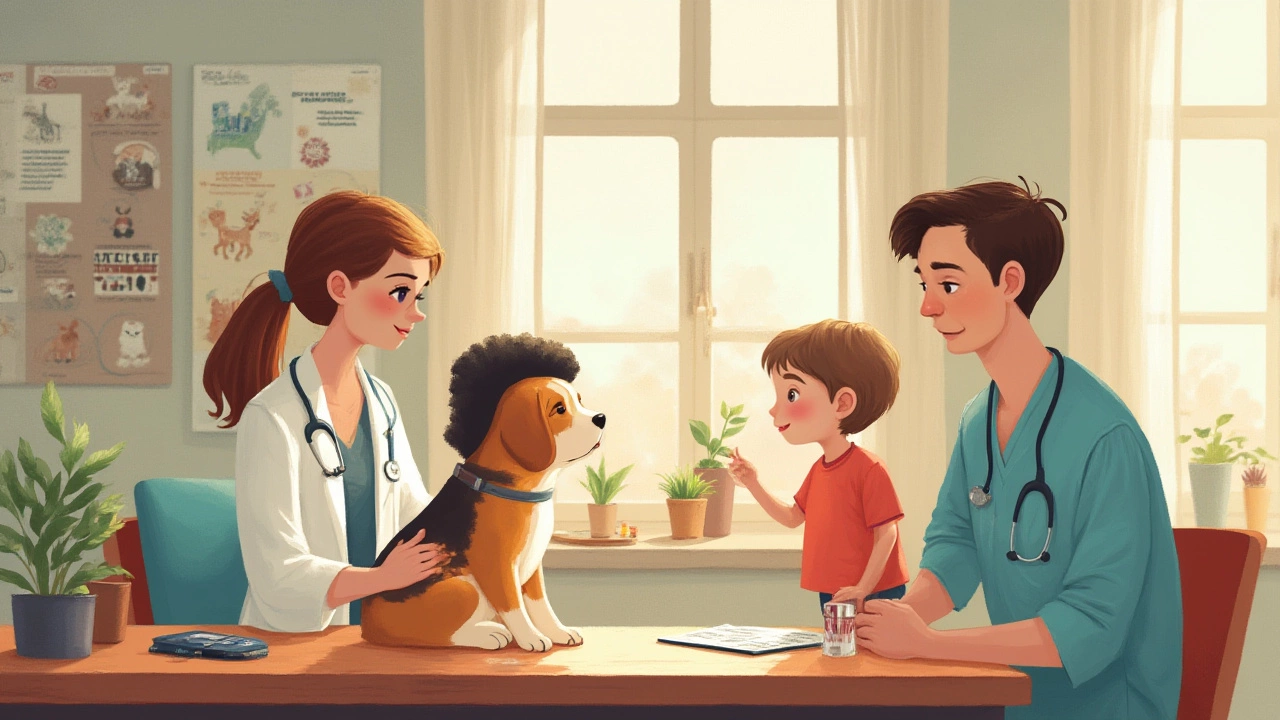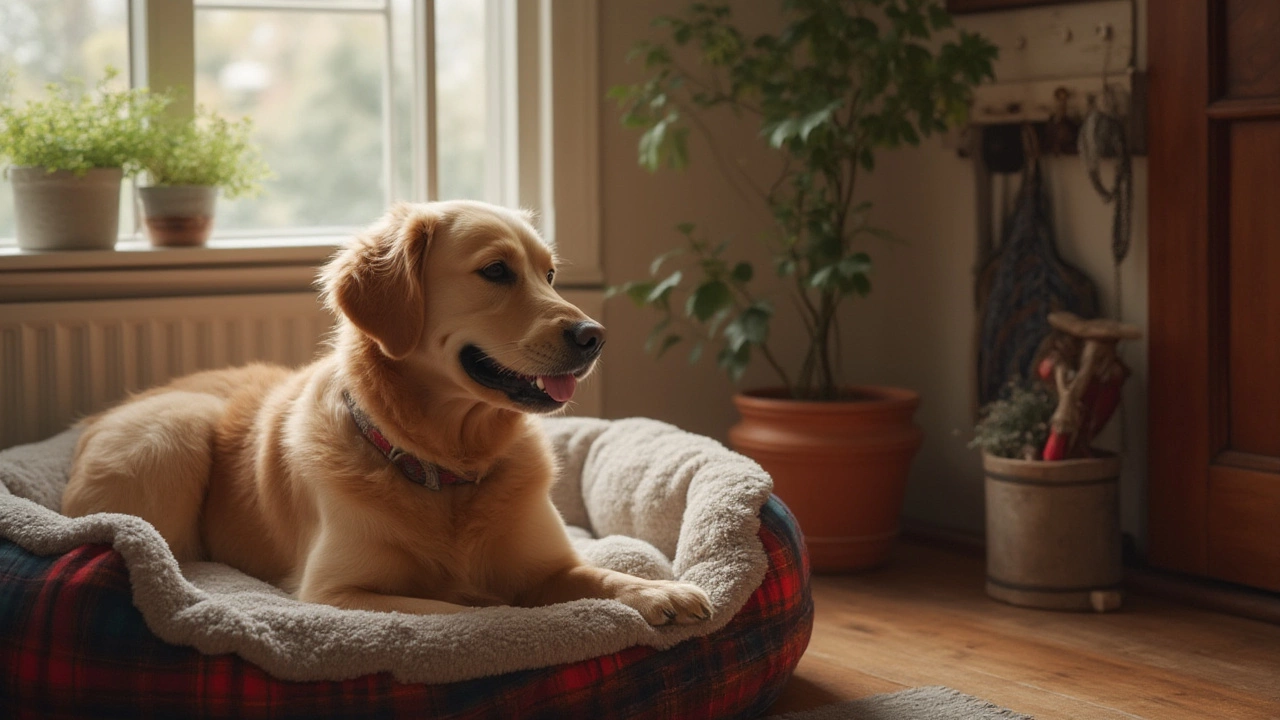I still remember the night Luna, our cat, and Rex, our excitable Lab, decided it was playtime at two in the morning. Rex’s collar jingled so loud he woke up both Callum and Keegan. That set off a family debate—should dogs even wear collars all the time? I mean, the jingle alone is enough to test anyone’s patience, but what about the real risks and benefits? Collars are so basic most people never even question them, but as I found out, it’s not a one-size-fits-all answer. Your dog's safety, comfort, and health could depend on this often-overlooked detail.
Why People Keep Collars On 24/7
Collars play a starring role in our daily dog routines. The number-one reason folks leave collars on all the time: so their dog always wears ID tags. That little tag could make all the difference if your dog sneaks out. Every year, animal shelters report thousands of lost dogs returned to their families—almost always because of ID tags on collars. GPS devices, rabies labels, and even AirTags are becoming regular additions. Many believe collars show responsible ownership and can even serve as a kind of security blanket for anxious pups that feel weird without them. Collars also make it easy to quickly grab your dog if you need to stop mischief or break up a kerfuffle at the dog park.
Then there’s the whole “house guest panic” scenario. Friends or relatives might not be as careful as you are about doors and gates. With a collar (and those ever-important tags) always on, you’re a step closer to peacefully reuniting with a runaway. Many trainers add that leaving a collar on allows you to snap a leash on in seconds for impromptu walks, cleanups after muddy backyard adventures, or surprise trips to the vet. Some dogs, especially those in city apartments, hear the familiar rattle of the collar and know it means something fun is about to happen. To them, the collar is almost like a signal that adventure’s coming.
It’s no wonder so many people—myself included—default to keeping collars on their pups around the clock. But how many of us really weigh the risks? That’s where things get more interesting (and a little more complicated).
Hidden Dangers of 24-7 Collar Use
Sounds harmless, right? But collars can turn risky if you never take them off. First, there’s the literal choking hazard. Imagine if your dog—like Rex—loves to wrestle with the cat, run through undergrowth, or squeeze under fences. Collars can snag on branches, crates, furniture, or even heater grates. The American Veterinary Medical Association has flagged collar accidents as a real emergency, especially for puppies and playful breeds. Cases land in the vet ER all the time: jaws tangled in each other’s collars during play, dogs caught on fence posts, or tags stuck in floor vents.
There’s also something called collar alopecia—that’s hair loss where the collar rubs the same spot over and over. It’s actually pretty common. Vets see everything from raw, red skin to full-blown infections caused by trapped dirt, moisture, or bacteria. Some dogs wind up with pressure sores under a tight or heavy collar, especially thicker ones made for large breeds. Even light nylon can irritate delicate dog skin if it’s always damp or if your pup is extra sensitive (think short-haired breeds or dogs with skin allergies).
I’ve even heard about silent dangers. One vet in our area mentioned nerve injury cases: a collar worn too tightly can slowly damage the nerves under your dog’s neck. It creeps up—your dog might flinch, resist being touched, or stop tugging at their leash. If it’s a quick-release or breakaway collar, it minimizes risk, but traditional buckles don’t offer any safety if, say, Luna decides to claw at Rex’s tags.
In multi-pet homes (mine included), play-biting is part of life. But it means there’s a real risk, especially if your dog has a collar with dangling charms or fancy adornments. Even a quick scuffle can turn dire if a mouth or tooth gets trapped. And let’s not ignore allergies—cheap collars are often dyed with chemicals that can cause reactions. Synthetic materials sometimes build up static electricity, making collars extra itchy in winter.

Signs Your Dog Needs a Collar Break
Your dog can’t exactly tell you his neck feels weird, so pay attention to the signs. First, check for bare patches, matting, or pink, raw skin under or around the neck. If Rex scratches all the time or keeps trying to wedge his head under the collar, that’s a red flag. Any swelling, bumps, or open sores mean it’s time for a collar holiday—and possibly a vet trip.
If your pup suddenly resists collaring, acts clingy, or flinches when you reach for his neck, it might mean the collar is bugging him. For dogs with double coats, like Huskies or German Shepherds, matting forms fast under collars—twice as fast if the dog gets wet often. Even with daily brushing, collars hide problems that creep up out of sight. After a rainy hike, check under the collar for trapped moisture; wet fur is a breeding ground for irritation and fungus. If you notice weird odors or funky stains, bacteria might be thriving.
Another little-known sign: sudden bad leash manners. When Keegan was smaller, she’d tug at Rex’s collar while playing pretend dog-walker. After those sessions, Rex would bark more on walks and shy away from his leash—we realized his collar must have rubbed him the wrong way. Subtle body language counts too. If your dog ducks his head, seems hyper-alert, or seems moody right after you re-collar him, listen to what he’s trying to say.
Best Practices for Safe Collar Wear
So, do you really need to make your dog go naked every night? There’s a happy medium. Most vets suggest removing collars during bedtime and when dogs are left alone, especially if they’re crated or unsupervised. Nighttime is when your dog’s skin needs to breathe and recover (and you’ll sleep through any midnight jingling). If your dog’s a champion escape artist, consider a safety harness or microchip for added backup.
During the day, make sure you can slip at least two fingers comfortably between collar and neck—too tight is no good, and too loose is a snag risk. Go for soft, breathable materials; leather is great if you care for it, and high-quality nylon dries quickly. Wash the collar weekly if your dog loves mud or swimming. For dogs who hate removing the collar, try switching to different “outfits” for night and day. A lightweight, bare-bones ID band can work while your dog sleeps, or try a breakaway style. These are designed to snap open under force. More and more pet parents are switching to quick-release collars for peace of mind, especially for active, high-spirited breeds.
Keep the collar ID current. Phone numbers fade, rabies tags expire, and address changes sneak up on you. Add reflective tape or LED attachments if you walk a lot at night. And hey, go for tag silencers to save your sanity if you’ve got a midnight collar jingler!
- Let your dog go collar-free at least 8 hours daily—overnight is easy.
- Check under the collar weekly for wear, irritation, or debris build-up.
- Wash collars in pet-safe detergent, rinse well, and air dry before re-applying.
- Update tags and check fit after each grooming, weight change, or growth spurt.
- Ask your vet about collar allergies or alternative options for high-risk dogs.
Some families use harnesses for daily walks, leaving the collar just for ID. This can help reduce neck pulling, which is better for the spine and airways, especially for breeds like Pugs or Bulldogs prone to breathing problems. High-tech collars and GPS tags can add another safety net, but even these need regular removal and cleaning to avoid skin problems.

Smart Collar Alternatives & Living Collar-Free
If you’re really worried about collar risks but still want your dog to wear some form of ID, there are creative solutions out there. Microchipping has quickly become the gold standard—over 90% of shelters scan for chips these days. But only about 60% of microchipped pets have current info in the database, so update your details online every time you move or change phone numbers. Tubular nylon ID “bands” or custom-engraved collars with stitched info are lightweight and less irritating than heavy tags.
Breakaway (safety) collars are a game changer for dogs who love rough play or tend to get stuck. Invented originally for cats, these collars snap open under direct pressure, which reduces strangulation risk. Dogs with short fur, thin skin, or allergies do best with flat, fabric collars—no metal edges, stiff seams, or bling. You can also try harnesses with built-in ID patches for daily use and pop a regular collar on only for outdoor adventures.
For indoor dogs—think little lap dogs or couch potatoes—the need for a collar 24-7 is much lower. If the door’s always shut and your windows are secure, your pup might be safest sleeping “naked.” In households with toddlers or cats (shout-out to Luna and Keegan), collar breaks help avoid accidental tangling. QR code pet tags and Bluetooth trackers can be attached temporarily or slipped into harnesses when you need them. Many doggy daycares now use color-coded harnesses or special clip-on badges for easy ID.
If you have a fenced yard, double-check there are no gaps or choke points where a collar could catch. Rural dogs who roam off-leash should always wear sturdy, quick-release collars—just don’t forget regular checks for ticks, burrs, and mud.
At the end of the day, collars are a tool—not a guarantee. The safest bet is a mix: a reliable collar with clear ID for outings, plus microchip backup and lots of collar-free nap time. As for Rex, he gets his collar off every night, and Luna gets to sleep in peace. No more collar jingles at bedtime—and way fewer neck scratches, too!
